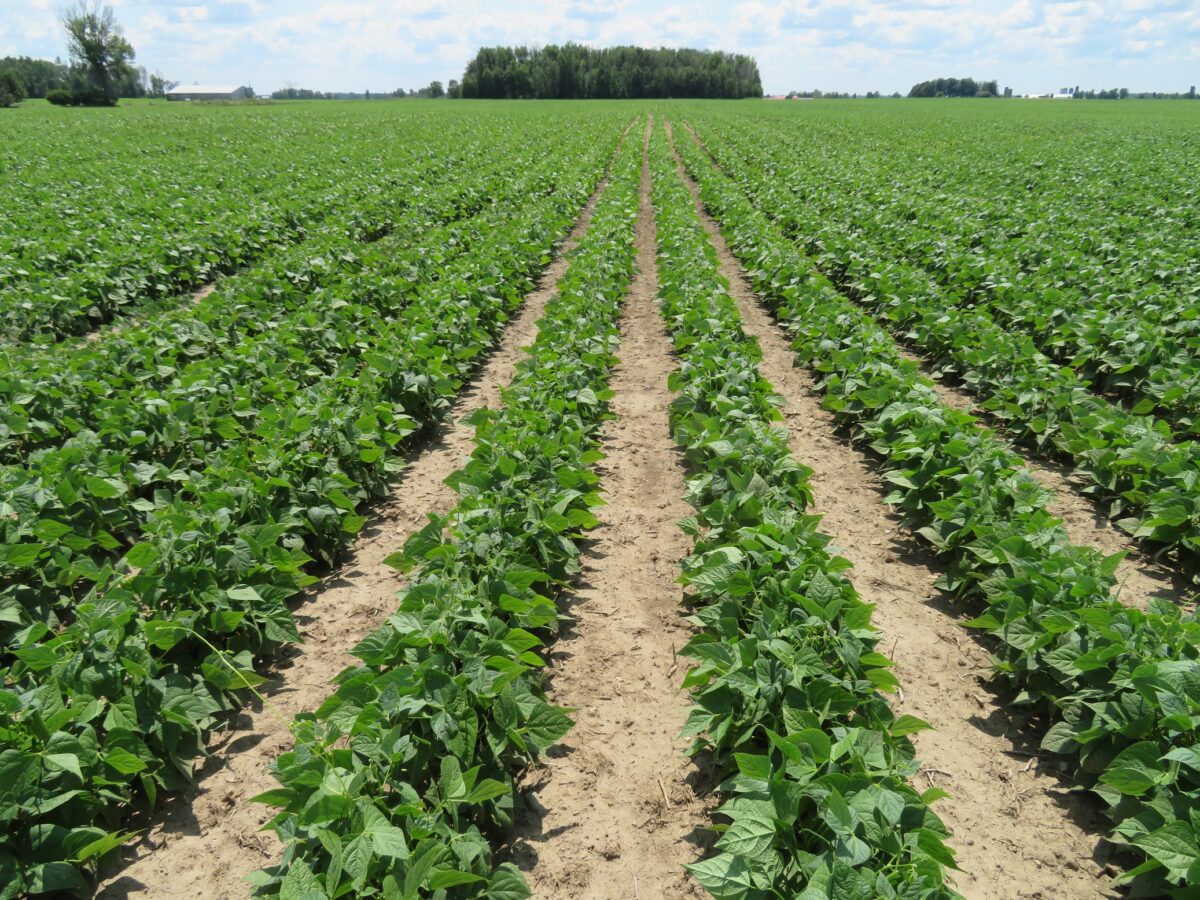Row widths of 70–75 cm (28–30 in.) are standard for both white and large-seeded coloured beans when the crop will be pulled and windrowed. In fields with a high risk of white mould, wide row widths are preferred to allow more air circulation in the canopy.
Narrow row widths of 36–56 cm (14–22 in.) are most suitable if the bean crop will be direct harvested. However, the advent of rod pullers has enabled beans planted in 50–56 cm (20–22 in.) rows to be pulled and windrowed.
Ontario row width trials with no-till white beans produced yields 14% higher in narrow row widths, i.e., less than 56 cm (22 in.), compared to wide rows. White and black bean row width trials, done in Michigan (2011–12), compared 15 in. and 20 in. row widths to 30 in. rows. Yields were improved between 4.5%–14% with narrower row width, and with no increase in plant height. In narrow rows, it is important to select white bean varieties with an upright plant type and good tolerance to white mould.
Emergence may be better in wide rows seeded with a conventional corn planter than narrow rows seeded with a grain drill or air seeder. Consider that:
- Drills and air seeders can damage fragile seed.
- Planters are designed to provide more uniform and accurate seed depth placement and better seed coverage.
- Wide rows have more seeds per linear measure to push up through surface crust. For example, 16 seeds/m (5 seeds/ft) of row in wide rows, compared to 10 seeds/m (3 seeds/ft) of 36 cm (14 in.) rows.
- Planting seeds into tire tracks can result in emergence problems.
In narrow rows, emergence can be a problem for beans planted into tractor tire tracks. Some producers adapt equipment to harrow or cultivate between the tractor tires and the planter.
